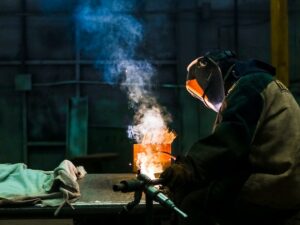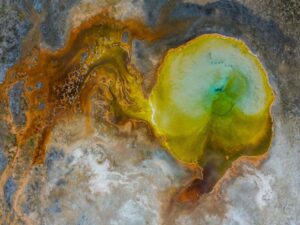
Construction sites and other environments where work is being done are havens for dust and other particles floating around. Some of these are harmless, leaving you with nothing more than a clogged nose. Others, like silica dust, are carcinogenic, meaning they are known to cause cancer and other serious illnesses in humans. In this article, we’re looking at what is silica dust, where silica dust comes from, the dangers of developing silicosis, and three ways to control silica dust in occupational settings.
Construction and silica dust
Silica is a chemical compound formed by combining oxygen and silicon atoms. This compound is commonly found in rock, clay, sand, stone, and gravel. Since these are widespread in the construction industry, silica exposure is a real danger for all who work in this field. When contained in bricks, tiles, roof slates, and concrete, silica is harmless. But when disturbed through grinding, drilling or chiselling, it becomes Respirable Crystalline Silica (RCS) which is easy to inhale.
The dangers of silicosis
Silicosis inflames and scars lung tissue, resulting in shortness of breath and severe coughing. The bad news is that silicosis is incurable and irreversible. In most cases, the deadly silicosis develops slowly over 10 to 20 years. However, when there is daily inhalation of unhealthy silica levels, this timeline can shorten to only a few months. The main symptoms of silicosis are:
- Cough that won’t go away
- Persistent shortness of breath
- Fatigue and weakness
Three steps to controlling silica dust
- Risk assessment
Step one in taking control of Respirable Crystalline Silica exposure is to conduct a thorough occupational health assessment focusing on instances where workers are being exposed to airborne silica. Added to identifying where silica is present, this assessment should also determine the levels of silica in the areas, and how much of a health risk it poses to the people working there.
- Risk controls
Once the silica exposure risks have been identified, next is to come up with effective risk control measures. These are meant to negate the existing occupational hazards relating to silica exposure by putting in place new work process, new PPE requirements, and monitoring tools that can alert to high levels of respirable Crystalline Silica in future.
- Review risk controls
Keeping an eye on dangerous levels of silica in the workplace is not a once-off activity that you only have to pay attention to once a year. On the contrary, keeping all workers healthy at work takes constant assessment, testing, and reviewing of the above risk controls. Occupational monitoring is a way workplaces can keep on top of the various risks facing workers in a number of industries.
Workplace environmental monitoring in South Africa
Apex Environmental is SANAS 17020 accredited. We are a Department of Labour Approved Inspection Authority (AIA), offering specialist Environmental and Occupational Hygiene monitoring services in South Africa. We specialise in Occupational Hygiene, Environmental Monitoring and Risk Assessments, Training and Monitoring Equipment Sales. We recognise the benefits of strong partnerships, accurate data, comprehensive reports and superior service. Contact Apex Environmental to arrange environmental monitoring in your workplace.








